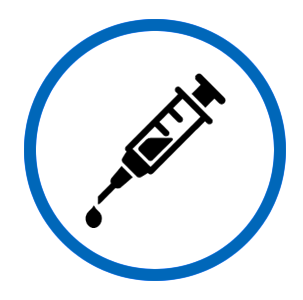Full course and timely immunizations prevent 1.5 million deaths of children under five every year.1UNICEF MICS
United Nations Children's Fund This is a periodic behavior that needs to be practiced at specific times before a child’s second birthday.

Full Course of Immunizations
Caregivers complete a full course of timely vaccinations for infants and children under 2 years
Key Points from Global Research
- Easy access to services can encourage caregivers to start and complete recommended immunization schedules.
- Engaging communities in outreach planning, supervision, and promotion activities can increase vaccination coverage.
- Improving both caregiver perception of quality of care and regular availability of vaccines can improve immunization completion rates.
Behavior Profile Sample: Full Course of Immunizations
A Behavior Profile is a summary analysis of each behavior. This sample draws from global evidence and illustrates the result of using the Create Behavior Profiles Tool to analyze factors, supporting actors and strategies and to ensure logical pathways exist between strategies proposed and factors related to the practice of the behavior. This sample may be used as a starting point or reference for creating Behavior Profiles.
| Improve maternal and child survival | |
|
Caregivers complete a full course of timely vaccinations for infants and children under 2 years Percentage of children 12-23 months who had received all 8 basic vaccinations
|
Behavior Analysis |
Strategy | ||
|---|---|---|---|
STEPSWhat steps are needed to practice this behavior?
Click on any box |
FACTORSWhat factors may prevent or support practice of this behavior? These should be analyzed for each country context.StructuralAccessibility: Vaccination services are often located far from household and there is a lack of transportation options Service Provider Competencies: Caregivers do not trust that health care providers are doing a good job Service Provider Competencies: Many caregivers feel that they are treated poorly by health care providers SocialNorms: There is sometimes religious opposition to vaccination InternalAttitudes and Beliefs: Many caregivers fear side effects Attitudes and Beliefs: Caregivers feel immunizations are not important and do not prevent illnesses Knowledge: Caregivers do not know about the need for immunizations or the recommended schedule |
SUPPORTING ACTORS AND ACTIONSWho must support the practice of this behavior?InstitutionalPolicymakers: Ensure vaccinations are available through regular mobile outreach Managers: Conduct regular supervision to reinforce competencies of providers Providers: Discuss importance, schedule and any concerns regarding vaccinations with all new mothers CommunityReligious Leaders: Actively support and encourage all new families to fully vaccinate their children HouseholdFamily Members: Encourage and provide support to caregivers to complete immunization schedule |
POSSIBLE PROGRAM STRATEGIESHow might we focus our efforts based on this analysis?Enabling EnvironmentPartnerships and Networks: Increase ownership and governance of programs by involving local communities in the planning and supervision of activities Policies and Governance: Ensure vaccinations are offered for free and explore reimbursement or vouchers for transport Policies and Governance: Ensure vaccine providers are both men and women and/or from religious groups to alleviate religious and cultural concerns Systems, Products and ServicesQuality Improvement: Implement pre and in-service education training and learning opportunities for health care providers that focus on vaccination, such as to proactively address caregiver concerns during consultations Demand and UseCommunication: Highlight significant benefits of vaccinating children in communication activities to ensure that caregivers place high priority on immunization completion Communication: Promote use of the Child Health Card to help families track immunizations |
Global Status of Accelerator Behavior
Percentage of children 12-23 months who had received all 8 basic vaccinations
Demographic and Health Survey, Rapid Survey on Children, The DHS Program Indicator Data API, The Demographic and Health Surveys (DHS) Program
